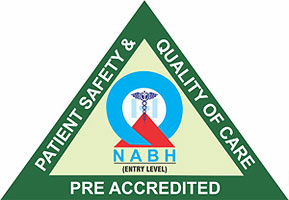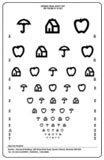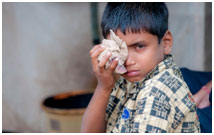+91-7291089674 (Bandra)
+91-7291092120 (Kandivali)





April 2, 2019 | Author: Admin
You can help protect your child’s eyesight by watching for the warning signs and taking your child to a pediatric eye doctor at the earliest sign of a problem.


Sometimes a child’s both eyes don’t work together as they should. One eye may be “Lazy” and wander in or out, or up or down (squint or strabismus).The brain receives a different image from each eye. The brain may switch back and forth between the two images, or it may turn off one image. If it turns off one image, the child stops using that eye resulting in a lazy eye (amblyopia). One eye may wander all the time or only when your child is tired, ill, or looking at nearby objects. Infants’ eyes normally wander, but if one eye shows signs of wandering after the age of 2 or 3 months, your child needs a detailed eye checkup. Treatment may involve patching, eye drops, glasses or surgery.
Sometimes a child cannot see objects that are far away (nearsightedness) or objects that are upclose (Farsightedness). A child can even be so farsighted that both nearby and distant objects are unclear. If the front of the child’s eye is irregularly curved (astigmatism), objects look blurry at all distances.
However, these common childhood vision problems can almost always be corrected with glasses or contact lenses. In some cases, vision problems can lead to amblyopia (lazy eye) if not corrected.


Eye infections and injuries are common in children. Viral and bacterial infections spread quickly through classrooms and day care centers. Children can also be hit in the eye or get dirt, foreign object in their eyes. Eye infections and injuries need to be treated promptly, as some can cause permanent damage to the eye.

Anything unusual in the way your child’s eyes appear can be a sign of a problem. Watch for the following:

Unusual behaviour can sometimes be a sign of an eye problem. Watch your child for any of the following warning signs:
Once your child is of school going age, he or she may be able to tellyou about eye problems. Listen for mention of the following:
Headaches and Dyslexia (inability to recognize letters and words) usually aren’t caused by eye conditions. However, if either is problem, your child should have an eye exam to rule out eye co-ordination or vision problems.
Your child may be afraid of an eye exam and may not cooperate. You can help by telling your child what to expect:

Pay attention to your child’s eyes and behaviour. Call the doctor if you notice any eye problem or if your child complains. And have your child’s eyes checked at 6 months, 3 years, 5 years and then yearlyupto18years age. Correcting vision problems early is the best way to protect your child’s sight.